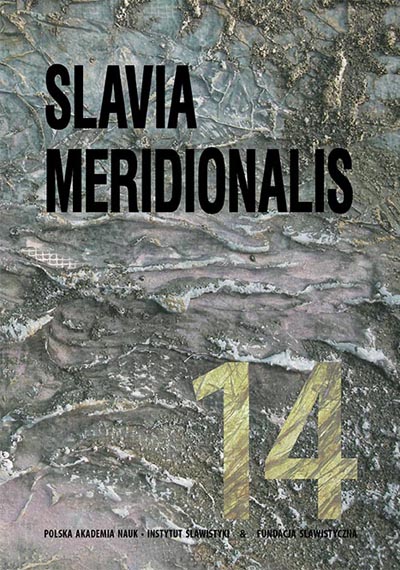Митът за феникса в православнославянската литературна традиция. Съдържание и интерпретации
The myth of the phoenix in Orthodox Slavic literary tradition. Symbolism and interpretation
Author(s): Ana StoykovaSubject(s): Language and Literature Studies, Studies of Literature
Published by: Instytut Slawistyki Polskiej Akademii Nauk
Keywords: the phoenix; Old Slavonic literature; Christian symbolism; Physiologus; Hexameron of Pseudo-Eustathius; Tolkovaja Paleia
Summary/Abstract: Like the majority of medieval literature, the myth of the phoenix entered the Orthodox Slavic world through translations of Byzantine works. A survey of the texts preserved in the Slavic manuscript tradition shows that there are no works of ancient authors among them, and all works containing the story of the phoenix have an entirely Christian orientation. Not counting particular references to the phoenix in some medieval writings, which in most cases are excerpts or paraphrases made on Slavic soil, the complete story of its life, customs, death and renewal is attested in four main versions found in different types of books. These are the two earlier recensions of Physiologus – the Alexandrian and the Byzantine, a fragment of the Hexameron of Pseudo‑Eustathius and a text from the Tolkovaia Paleia. They differ in some details of their content as well as in their explanations. The function of each version of the myth of the phoenix corresponds to the specific context in which it is placed. The way in which the symbolic meaning of the wonderful bird changed over the centuries can be seen in the four variants of the story. In the Alexandrian version of the Physiologus, it refers directly to Jesus Christ and contains the most abstract Christological ideas of Christian dogma – the Incarnation of God, his death and resurrection. The phoenix of the Byzantine version embodies the idea of God’s resurrection and serves as a proof of its authenticity. In the fragment of Pseudo-Eustathius’ work, the bird symbolises the eschatological resurrection of the flesh, confirming the extension of God’s mercy to people. The phoenix in the Tolkovaia paleia refers to the new life in Heaven that awaits martyrs of Christianity. The Slavic versions of the myth of the phoenix reflect both themes focusing on its symbolism – the renewal of the time by starting a new epoch in human history, and the renewal of life after death which is both an end and a beginning.
Journal: Slavia Meridionalis
- Issue Year: 2014
- Issue No: 14
- Page Range: 48-73
- Page Count: 26
- Language: Bulgarian

